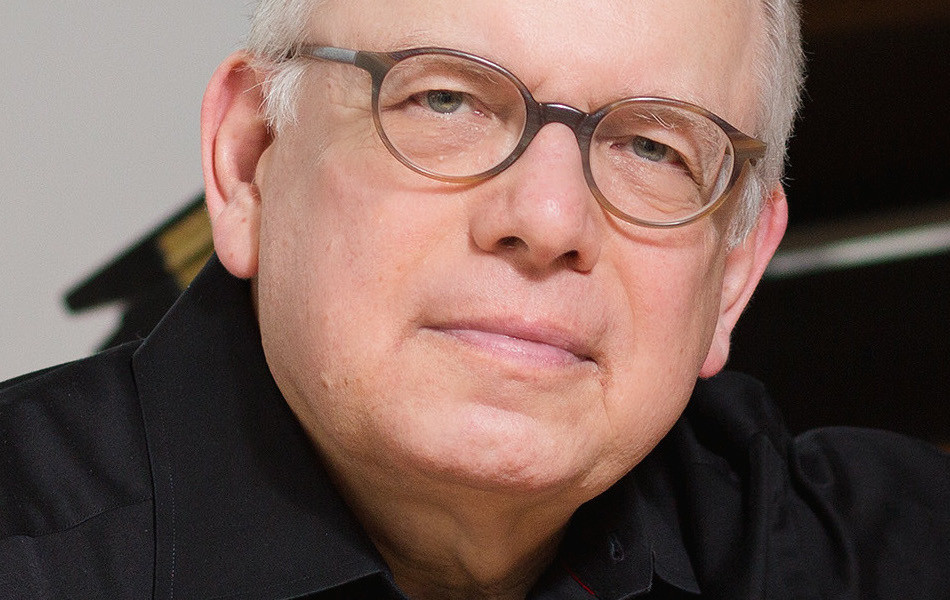Key Pianists presents Peter Takács: The Beethoven Experience—Late Beethoven in Review
Key Pianists presents Peter Takács: The Beethoven Experience—Late Beethoven
Peter Takács, piano; Soovin Kim, violin; Virgil Hartinger, tenor
Weill Recital Hall at Carnegie Hall, New York, NY
January 14, 2016
January is only two weeks old and already there is a litany of loss: Pierre Boulez, David Bowie, Alan Rickman, and many more unheralded. Now I must selfishly mourn the end of this satisfying mini-overview of Beethoven’s music provided by master pianist Peter Takács. He brings old-world virtues of golden singing tone, and myriads of shifting colors based on his keen knowledge of every chord and its relative weight and where every phrase is headed. Nothing clinical, cold, or “post-modern perfect” about this pianist, thank goodness. We have enough of that.
Instead, as I have noted previously, we have a soul who has entered deeply into the creative act “beside” Beethoven, as it were. He reveals it freshly every time, risks and all. The sense of struggle was always a key feature not only in Beethoven’s compositional practice, but also in his dealing with life events such as the obvious: deafness, and the subtler: fight for financial security and emotional fulfillment. We shouldn’t want to air-brush that tension away.
It was good of Mr. Takács to begin the concert with Beethoven’s true swan-song for solo piano, the set of six Kleinigkeiten, Op. 126 ( Bagatelles, or “Trifles”). These miniatures, as distinct from his prior two sets (Op. 33 and Op. 119, mainly written and published for money) may be small in length, but they are giant in visionary power. One hears glimmers of many of the late-period processes being tossed about, from hearty stomps to melting lyricism to transcendent spatial insights and echoes across alpine valleys. Mr. Takács observed the con moto indications found in them, to give a more earthy view, less freighted with mysticism than usual.
The yearning for a “lost Arcadia” (as Maynard Solomon points out in his excellent book Late Beethoven: Music, Thought, Imagination) is often symbolized by Beethoven’s use of G major as tonality. We had that in two of the above bagatelles and in the second work on the program: the delightful and underplayed Violin Sonata No. 10 in G major, Op. 96. A product of Beethoven’s Archduke Rudolph “period,” if you will, it switches from the pastoral to the spiritual in the blink of an eye. Violinist Soovin Kim was excellently subtle and poised as a partner, without losing any enthusiasm where it was needed. The two musicians were perfectly aligned in concept and execution. The fourth movement rondo with variations was particularly touching in its disinclination to say “goodbye,” consisting of several attempts at an ending, finally bursting forth in joy.
After intermission, Mr. Takács utilized another collaborative artist, the sweet-voiced lyric tenor Virgil Hartinger, in the innovative song-cycle An die ferne Geliebte, Op. 98 (To the Distant Beloved). This was the first interconnected cycle ever, paving the way for subsequent works by Schubert and Schumann. The words were written by Alois Isidor Jeitteles, probably at Beethoven’s request, and are full of the tropes of Romanticism: separation, longing, nature. Can we still identify with these sentiments in an age of Skype, Snapchat, and the rest? I certainly hope so.
“Nimm sie hin denn, diese Lieder,/Die ich dir, Geliebte, sang. . .” (Take you then these songs/Which I sing to you, Beloved) goes the sixth and final song. It proves a fitting motto for what Mr. Takács has been saying to us all fall and winter. Mr. Hartinger grew on me: his demeanor was generally still, which I appreciated—no histrionics—although I did find some issues with diction, legato, and the sudden dynamic shifts required, perhaps just stiffness, for when he got to the fifth and sixth songs, the “money shot,” he was very moving, and provided vivid contrasts and much more emotional involvement.
To conclude, Mr. Takács scaled the Everest of the last piano sonata, Op. 111, in C minor. Claudio Arrau always taught that one should never divide between the hands the treacherous opening double octave for the left hand alone that descends a diminished seventh, that it would minimize the sense of Herculean struggle. Mr. Takács did not divide two of the three, and he missed both of them. Folks, I’m here to tell you, it’s okay. It’s not what happens, it’s how you continue that is the mark of the true artist. In a way, the whole movement was dominated by Mr. Takács’ grappling with some memory issues. However, each time something repeated he nailed it with truly Beethovenian determination. In the Arietta (the second of only two movements) he created the spiritual stillness of the theme gorgeously, and each variation, spun like heavenly weaving out of the one before, worked its magical effect. I am reminded of Alfred Brendel’s note to Op. 111 about the final cadences that withdraw quietly to silence: “a silence that we now perceive to be even more important than the sound which preceded it.”
Thank you, Peter Takács, and may I issue a challenge? That you return soon and often, with the other twenty-seven piano sonatas, all the piano-based instrumental chamber music, and all the variations, miscellaneous pieces, and Lieder. That ought to keep Mr. Takács and New York nourished for quite some time!

